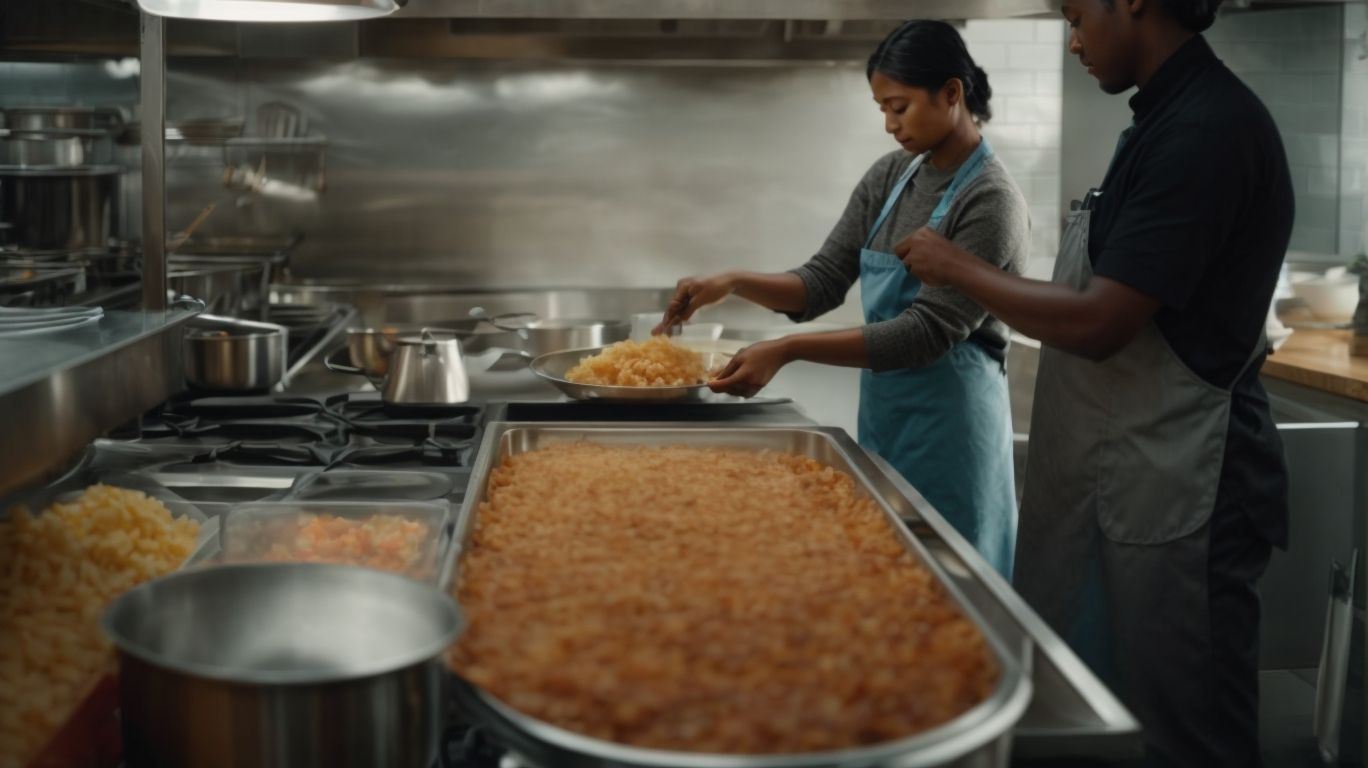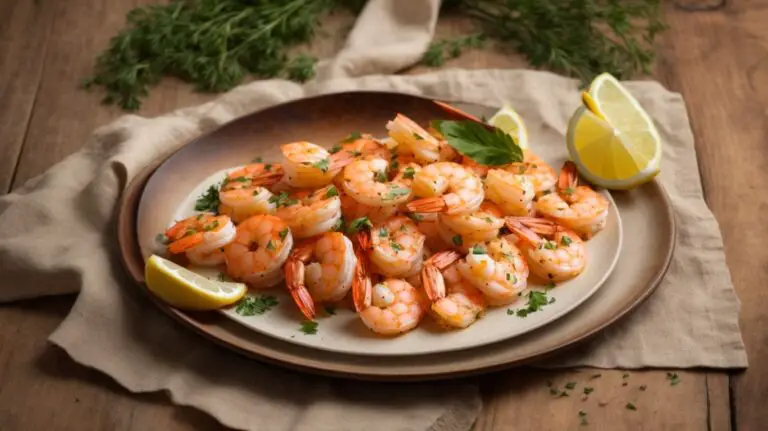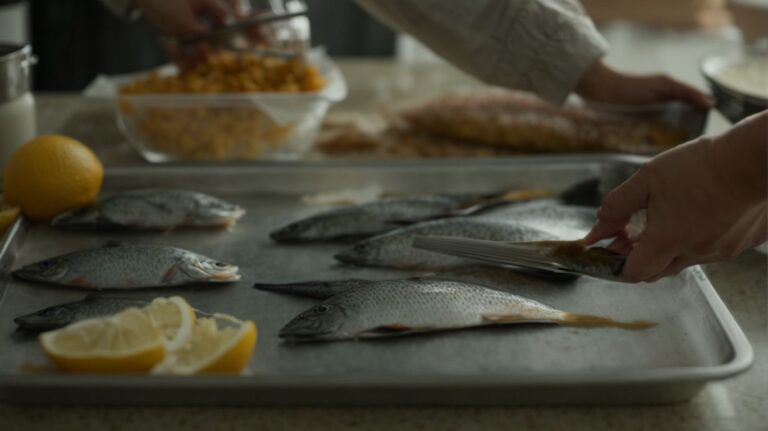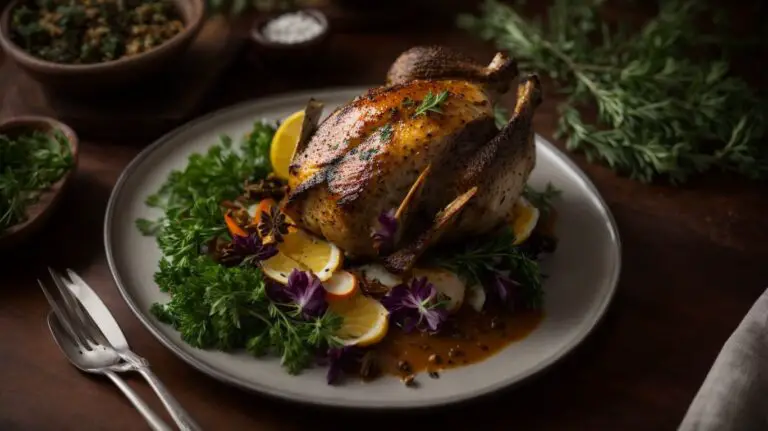How to Cook From Frozen?
Have you ever wondered what cooking from frozen really means?
We will explore the benefits of cooking from frozen, including saving time, reducing food waste, and convenience for busy schedules.
We will also discuss the types of foods that can be cooked from frozen, as well as safety tips for cooking them. Stay tuned for some delicious recipes and handy tips for cooking from frozen that will make meal prep a breeze!
Key Takeaways:
What Does Cooking From Frozen Mean?
Cooking from frozen refers to the process of preparing and cooking food directly from its frozen state without the need for prior thawing.
This method of cooking offers several benefits, such as convenience, time-saving, and often preserving the flavors and nutrients of the food. It is particularly suitable for foods like frozen vegetables, fruits, fish fillets, and pre-prepared meals, as they are typically flash-frozen at their peak freshness.
To cook from frozen successfully, it is essential to adjust the cooking time and temperature, usually requiring a slightly longer period to ensure thorough cooking. This technique can be a game-changer for busy individuals or for those who want a quick and efficient way to enjoy nutritious meals.
Why Cook From Frozen?
Cooking from frozen offers several advantages, including time-saving benefits, reduced food waste, and convenience for individuals with busy schedules.
When cooking from frozen, you eliminate the need for defrosting, which can save you precious time during meal preparation. It’s a quick and efficient way to get food on the table without sacrificing flavor or nutrition. By cooking directly from the frozen state, you can extend the shelf life of the food and reduce the chances of spoilage, making it a more economical and sustainable choice.
Cooking from frozen is incredibly practical as you can have a variety of frozen ingredients readily available, allowing for impromptu meals or last-minute dinner plans without the need for extensive preparation.
Saves Time
One of the key reasons to cook from frozen is the time-saving aspect, especially when preparing meats such as steak, chicken, or pork using specific cooking techniques.
When cooking frozen meats, it’s important to adapt your cooking methods to ensure the best texture and flavor profiles.
- For steak, consider a reverse sear method, starting the meat in a low-temperature oven before finishing in a hot skillet for a perfect sear.
- Chicken breasts can be oven-baked from frozen, ensuring a juicy interior without the hassle of defrosting.
- Pork chops can be pan-seared straight from the freezer, keeping them tender and succulent with a flavorful crust.
Reduces Food Waste
Cooking from frozen helps in reducing food waste by maintaining the quality of the food products, following proper labeling and instructions to ensure food safety.
When cooking from frozen, it is crucial to make sure that the food is heated to the recommended temperature to eliminate any potential harmful bacteria, thus ensuring food safety.
Adhering to the labeling guidelines on the packaging also plays a significant role in this process, as it provides valuable information on proper preparation methods and cooking times.
By cooking from frozen, you are not only preventing food from going to waste but also safeguarding the quality and taste of the meal through these important measures.
Convenient for Busy Schedules
For individuals with busy schedules, cooking from frozen offers a convenient solution, utilizing ovens at appropriate temperatures to ensure food safety and chef-recommended practices.
Regarding cooking frozen foods in the oven, it’s crucial to follow specific guidelines to achieve the best results. Preheat the oven to the recommended temperature for the particular dish you are preparing. This step ensures that the food cooks evenly and reduces the risk of harmful bacteria growth. It’s advisable to use a food thermometer to check the internal temperature of the food to confirm it has reached a safe level. By adhering to these oven-specific tips, you can enjoy delicious meals without compromising on food safety or taste.
What Foods Can You Cook From Frozen?
A variety of foods can be cooked from frozen, including vegetables, meat, seafood, and fruits, offering versatility in frozen food preparation.
Regarding frozen vegetables, they retain their nutrients remarkably well and are convenient for quick and easy meals. Stir-frying or roasting frozen vegetables brings out their flavors and textures while preserving their essential vitamins and minerals.
- Meat such as chicken, beef, or pork can be cooked from frozen in a slow cooker or pressure cooker, ensuring juicy and tender results. This cooking method is not only time-saving but also locks in the savory flavors of the meat.
Seafood like fish fillets or shrimp can be grilled or baked from frozen, providing a healthy dose of omega-3 fatty acids and protein. The freshness of seafood is maintained during the freezing process, making it a convenient option.
Frozen fruits are perfect for smoothies, desserts, or baking recipes, offering a burst of sweetness and vitamins. They can be thawed quickly or used directly in cooking, adding a refreshing and vibrant touch to various dishes.
Vegetables
When cooking vegetables from frozen, various recipes, preparation methods, and tips can enhance the flavor and texture of the final dish.
One key consideration when working with frozen vegetables is not to thaw them before cooking, as this can lead to a mushy texture. Instead, they can be cooked directly from frozen to preserve their integrity.
For optimal results, try roasting frozen vegetables at a high temperature to achieve a crispy exterior while maintaining a tender interior. Seasoning with a blend of herbs and spices can add depth of flavor.
Experiment with stir-frying frozen veggies in a hot pan for a quick and healthy side dish. Consider adding a splash of soy sauce or a squeeze of lemon juice for an extra burst of flavor.
Meat and Seafood
Frozen meat and seafood such as steak, chicken, and pork require proper seasoning and cooking techniques to ensure optimal taste and texture.
Regarding seasoning frozen meats and seafood, it is important to allow them to thaw in the refrigerator first to avoid uneven cooking. Once thawed, generously season both sides with your preferred mix of spices and herbs. For steak, a simple blend of salt, pepper, and garlic powder works wonders, while chicken benefits from a mix of paprika, thyme, and cayenne. Pork can be enhanced with a rub of brown sugar, mustard powder, and smoked paprika.
For cooking, make sure your pan or grill is preheated to the right temperature before adding the meat. Searing meats at high heat helps to lock in the juices and develop a flavorful crust. Remember to adjust the cooking time according to the thickness of the cut – thinner cuts cook faster than thicker ones.
Fruits
When cooking fruits from frozen, baking techniques can help maintain their quality and flavor, ensuring adherence to labeling instructions for optimal results.
One of the key benefits of baking frozen fruits is the ability to lock in their natural sweetness and nutrients. By using gentle heat in the baking process, you can retain the texture and juiciness of the fruits, creating a delicious end result.
It’s crucial to pay attention to the specific instructions provided on the fruit packaging. These guidelines often contain valuable information on optimal baking times and temperatures, ensuring that you achieve the best possible outcome.
Experimenting with different baking methods, such as crumbles, pies, or tarts, can further enhance the flavors and create versatile dessert options for any occasion.
How to Safely Cook From Frozen?
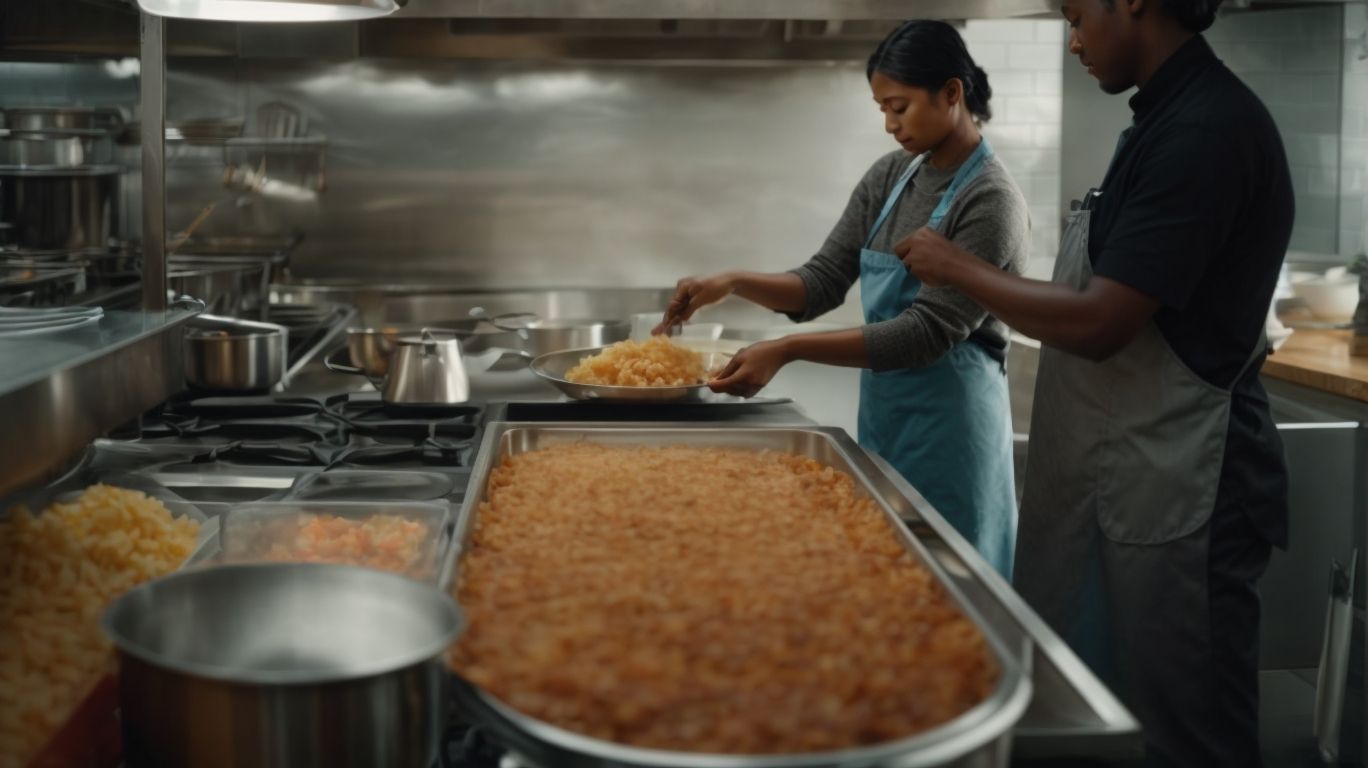
Credits: Poormet.Com – Bobby Hill
Safely cooking from frozen involves following specific guidelines, techniques, and recipes to ensure food safety and optimal cooking results.
One crucial aspect of cooking from frozen is to ensure that the food reaches a safe internal temperature throughout. This is especially important to kill any potential bacteria that might have grown during storage. To achieve this, consider using a food thermometer to check the temperature of the thickest part of the food item. This simple tool can help you determine when the food is safe to consume.
When cooking from frozen, it’s essential to avoid thawing the food partially and then refreezing it, as this can lead to bacterial growth and diminish the quality of the dish. It’s advisable to plan ahead and defrost the frozen food in the refrigerator overnight before starting the cooking process.
Follow Proper Thawing Techniques
Properly following USDA-recommended thawing techniques is essential for ensuring food safety and implementing appropriate cooking techniques.
Regarding thawing frozen foods, the USDA suggests three safe methods:
- Thawing in the refrigerator is the most recommended method as it ensures a consistent and safe temperature. Placing frozen food on a tray or plate on the bottom shelf helps prevent any drips onto other foods.
- For quicker thawing, immerse the sealed food package in cold water, changing the water every 30 minutes.
- If using a microwave, make sure to cook the food immediately after thawing to prevent bacterial growth.
Adjust Cooking Time and Temperature
Adjusting cooking time and temperature based on the type of food, especially meats, is crucial for achieving desired cooking outcomes recommended by chefs.
Regarding cooking meats, different cuts and types require varying degrees of heat and time to reach the perfect level of tenderness and flavor. For instance, lean cuts like chicken breasts need to be cooked at a higher temperature for a shorter duration, while tougher cuts like brisket benefit from slow cooking at lower temperatures.
Mastering the art of adjusting cooking time and temperature not only enhances the taste and texture of meats but also ensures they are safe to eat by reaching the ideal internal temperature to kill harmful bacteria. Chefs often emphasize the importance of using a food thermometer to accurately gauge the doneness of meats, highlighting the precision required in culinary expertise.
Use a Meat Thermometer
Utilizing a meat thermometer during the cooking process enhances safety measures and contributes to accurately determining food readiness based on recommended cooking temperatures.
By ensuring that meats are cooked to the proper internal temperature, you reduce the risk of foodborne illnesses caused by undercooked foods. Temperature safety is imperative when handling poultry, beef, pork, and other types of meat to avoid potential health hazards. Not only does using a meat thermometer add a layer of precaution to your cooking routine, but it also helps you achieve desired results, ensuring that your meals are cooked to perfection.
Tips for Cooking From Frozen
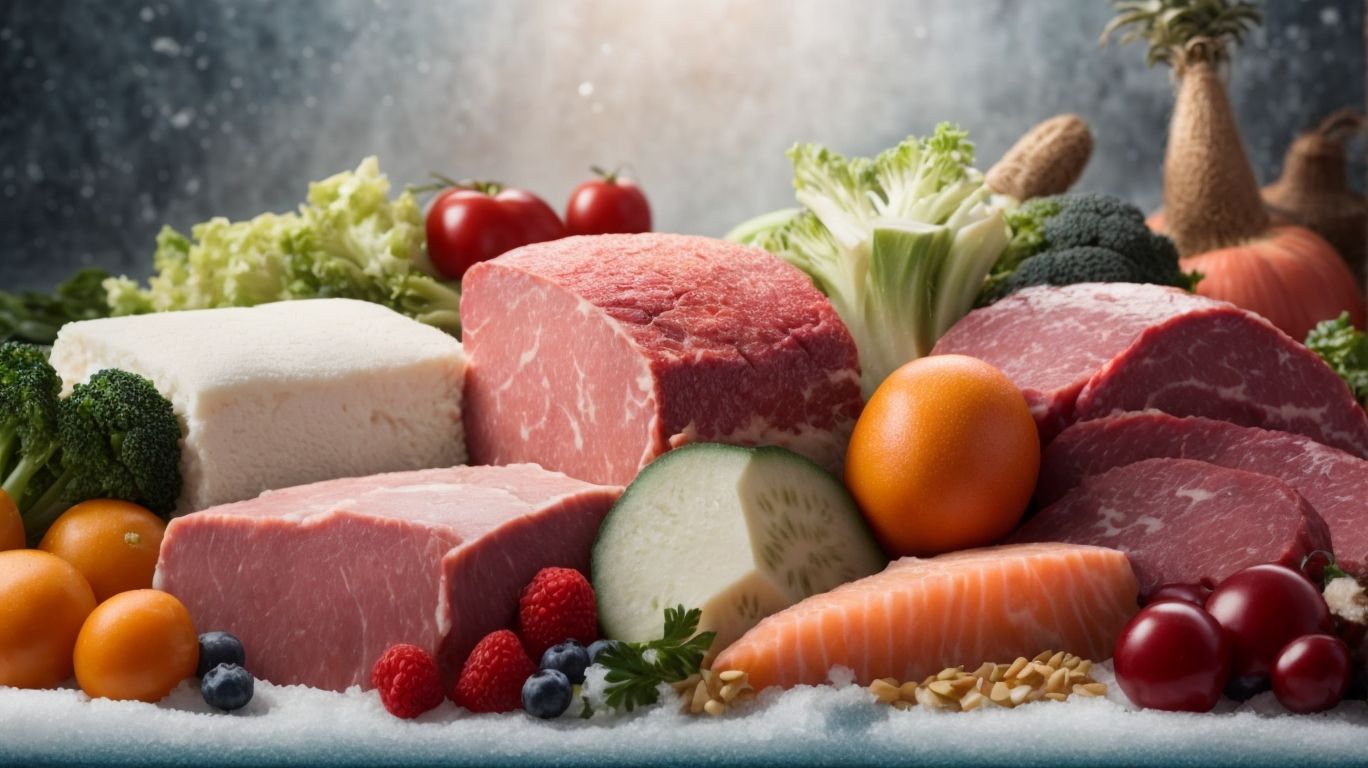
Credits: Poormet.Com – David Thompson
When cooking from frozen, incorporating proper seasoning, flavoring, and selecting the right cooking method can significantly enhance the taste and presentation of the final dish.
Seasoning plays a crucial role in amplifying the taste profiles of frozen dishes. Consider using a blend of dried herbs such as thyme, rosemary, or oregano to infuse depth. Experiment with flavorful spices like smoked paprika, cumin, or chili powder for a kick of heat.
To maximize flavor, marinate the frozen protein in a mixture of citrus juices, soy sauce, and garlic before cooking. Utilizing umami-rich ingredients like miso paste or fish sauce can elevate the dish to restaurant-quality status.
Seasoning and Flavoring
Enhancing frozen dishes with diverse seasoning and flavoring options can transform the taste profile, requiring attention to detailed recipes, preparation methods, and culinary tips.
Regarding seasoning and flavoring frozen foods, the possibilities are endless. Experimentation with different herbs, spices, blends, and marinades can truly elevate the flavors of typically bland frozen dishes. For example, a simple garlic-parmesan mixture can breathe new life into frozen vegetables, while a dash of smoked paprika can add a smoky depth to reheated meats.
Additionally, presentation plays a crucial role in enhancing the overall appeal of frozen dishes. A sprinkle of fresh herbs or a drizzle of high-quality olive oil can make all the difference in both taste and visual appeal.
Remember, seasoning and flavoring are not just about masking the frozen taste but rather about enhancing and complementing the existing flavors to create a well-balanced and delicious meal.
Use the Right Cooking Method
Selecting the appropriate cooking method, including oven usage and temperature control, is essential for ensuring food safety and optimal cooking outcomes when working with frozen ingredients.
Regarding cooking frozen ingredients, using the oven can be particularly advantageous due to its ability to evenly distribute heat, ensuring that food is thoroughly cooked with a consistent temperature throughout.
- One of the key benefits of oven cooking is that it allows for a hands-off approach once the food is placed inside, freeing up time to attend to other tasks.
- Temperature control is crucial as it determines the cooking speed and the overall quality of the dish. Following recipe guidelines and checking the internal temperature of the food with a thermometer are vital steps for achieving the desired results.
When handling frozen ingredients, it’s important to defrost them safely beforehand to prevent bacterial growth and ensure that the food is cooked to the correct internal temperature, reducing the risk of foodborne illnesses.
Proper Storage and Labeling
Maintaining proper storage conditions and labeling practices is crucial for preserving food quality and ensuring adherence to recommended instructions when working with frozen ingredients.
Regarding frozen foods, proper storage is essential to maintain their taste, texture, and nutritional value.
Correct temperature control is fundamental – ensuring that the freezer temperature stays consistently below 0°F (-18°C) to prevent the growth of harmful bacteria.
Labeling each item with the date of freezing and use-by date can help you keep track of freshness and prevent food waste.
By following these best practices in storage and labeling, you not only prolong the shelf life but also uphold food safety standards, ensuring that your meals are not just delicious but also healthy.
Recipes for Cooking From Frozen
Explore a variety of delicious recipes for cooking from frozen, including frozen vegetable stir-fry, baked frozen chicken breasts, and frozen berry smoothie bowl, offering creative and convenient meal options.
When preparing frozen vegetable stir-fry, start by heating a pan and adding a splash of oil before tossing in the frozen veggies. Season with soy sauce and spices of your choice for a flavorful dish.
For baked frozen chicken breasts, preheat the oven to the appropriate temperature and season the chicken with herbs, garlic, and olive oil sauce. Place the chicken in the oven until thoroughly cooked through.
For a refreshing frozen berry smoothie bowl, blend your choice of frozen berries with yogurt or almond milk for a thick, creamy consistency, topping it with granola and fresh fruit for added crunch and flavor.
Frozen Vegetable Stir Fry
The frozen vegetable stir-fry recipe combines a vibrant mix of vegetables with flavorful seasonings, offering a quick and nutritious meal option for busy days.
A key element in preparing a delectable frozen vegetable stir-fry is the selection of vegetables. Opt for a colorful array such as bell peppers, broccoli, carrots, snap peas, and water chestnuts for a visually appealing and well-balanced dish.
Regarding seasoning, the possibilities are endless. Garlic, ginger, soy sauce, and a dash of sesame oil can infuse rich flavors into the stir-fry, while red chili flakes or sriracha add a hint of heat for those who enjoy a spicy kick.
Baked Frozen Chicken Breasts
The baked frozen chicken breasts recipe features tender and juicy chicken seasoned to perfection, providing a simple yet satisfying dish that can be easily prepared from frozen ingredients.
Start by preheating your oven to 375°F for optimal cooking. While the oven is heating up, take the frozen chicken breasts out of the packaging and place them on a baking sheet lined with parchment paper or aluminum foil. Thawing the chicken breasts is not necessary as they will cook perfectly from frozen.
Next, drizzle a light coating of olive oil over the chicken breasts to help seal in moisture. Season generously with your favorite herbs and spices such as garlic powder, paprika, salt, and pepper for a flavorful kick.
Once seasoned, insert a meat thermometer into the thickest part of the chicken breasts to ensure they reach an internal temperature of 165°F for safe consumption.
Frozen Berry Smoothie Bowl
Indulge in the refreshing flavors of a frozen berry smoothie bowl, featuring a blend of colorful fruits and nutritious ingredients that can be easily assembled for a delightful and healthy treat.
Start by choosing a variety of frozen berries such as strawberries, blueberries, and raspberries to add a burst of flavor and natural sweetness to your smoothie bowl. Blueberries , in particular, are packed with antioxidants and vitamins, making them a superfood addition to your breakfast. Next, combine the frozen berries with a ripe banana for creaminess and natural sweetness. Add a splash of almond milk or Greek yogurt for a smooth texture and extra creaminess.
Once the ingredients are in the blender, blend until smooth and creamy, ensuring all the fruits are well incorporated. Pour the mixture into a bowl, ready to be topped with a variety of superfoods such as chia seeds, sliced almonds, or coconut flakes for added texture and nutritional benefits.
Frequently Asked Questions
How to Cook From Frozen?
FAQ:
– Can I cook food directly from frozen?
Yes, you can cook food directly from frozen. However, it may take longer to cook and may not turn out as crispy or evenly cooked as thawed food.
– What is the best way to thaw frozen food before cooking?
The best way to thaw frozen food is by placing it in the refrigerator overnight. This allows for safe and gradual thawing.
– Are there any safety precautions I should take when cooking from frozen?
Yes, make sure to cook the food immediately after thawing, and be sure to follow recommended cooking temperatures to ensure food safety.
How to Cook From Frozen?
FAQ:
– Can I use the same cooking method for thawed and frozen food?
In most cases, yes. However, you may need to increase the cooking time for frozen food to ensure it is fully cooked.
– Is it necessary to defrost frozen food before cooking?
It depends on the type of food and the cooking method. Some foods, like meat, may require defrosting to ensure even cooking.
– Are there any foods that should not be cooked directly from frozen?
Yes, delicate foods like fish or vegetables may need to be thawed before cooking to prevent them from becoming overcooked or mushy.

